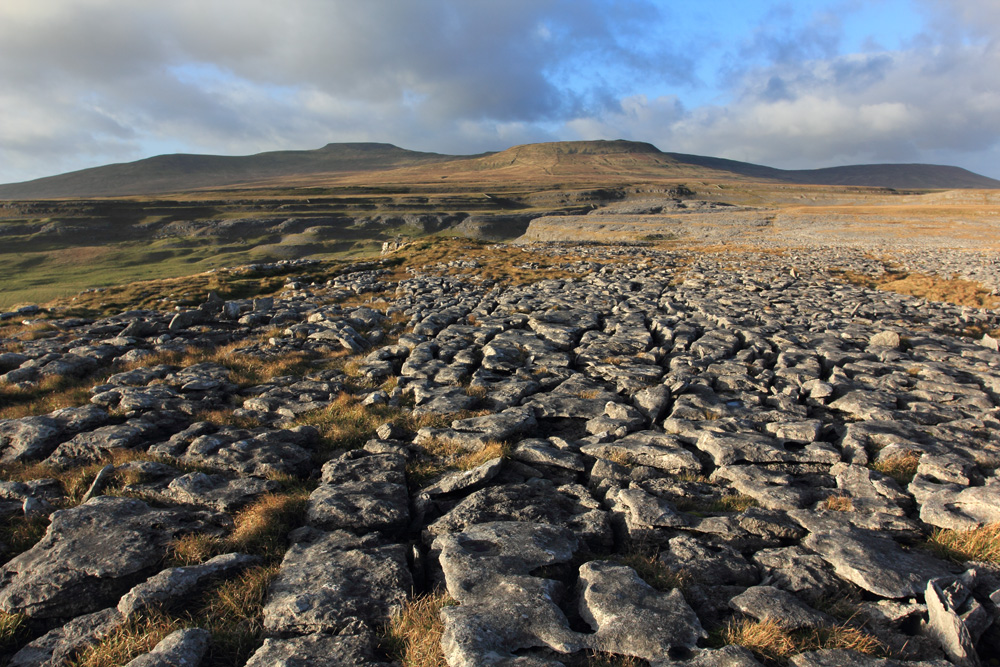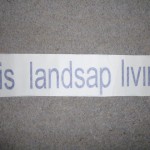
 David Sharrod – Director, Yorkshire Dales Millennium Trust
David Sharrod – Director, Yorkshire Dales Millennium Trust
This is taken on top of Moughton Scar; a ridge that runs sort of midway between Pen-y-Ghent and Ingleborough. Despite being in the middle of one of the most heavily visited and best loved parts of the Dales, not many people know about it.
As you can see, it’s limestone pavement. When you stand up there and look towards Ingleborough it’s almost a lunar landscape; desolate – in the nicest possible way. I genuinely love it up there. I like it in winter when you’ve got snow and ice, but also in late summer when you get the contrast between the heather and the limestone.
I’ve always thought that the best views in high country are actually not from the highest peaks, but from slightly lower ones, whether that’s in the Alps, or the Lake District, or the Dales. So on Moughton you look across to Pen-y-Ghent and Ingleborough, and you get a sense of their scale.
When I’m up there, I always think that we live on this small, crowded island, but that when you start walking about Northern England you find there’s a lot of nothing, a lot of big open spaces and big skies. And then you get the contrast with the valley, of course. Behind you here is Ribblesdale, which is full of life from the farms, the quarries, and the communities there.
I first came to the Dales on a sixth form field trip to Austwick. It was a magical week, and a week that changed my life. It opened my eyes to the Dales as a fantastic place, but there was also a brilliant teacher who changed my mind about a few things – he persuaded me to go to university for a start. I never dreamed that many years later I’d end up living a few doors away from where we stayed.
That experience comes to mind during discussions about our education and outreach work at the Trust. We talk about whether people need ongoing experiences, and a proper structured introduction to the countryside, but I actually know that bringing somebody out for a day – or if you can a week – can also change somebody’s life. We see that happen all the time.
I’ve worked at the Trust for 15 years now. We have a very wide remit, but also in a way a narrow remit, which is to support the well-being of this area, as simple as that. We started off with a big Millennium Commission grant, to do a landscape project essentially: tree planting, restoring drystone walls, field barns, historic buildings, historic features, wildlife habitats and community buildings. We’ve carried on doing landscape work, but we’ve also diverted into all sorts of other things, because you soon realise that everything in a landscape like this is interconnected.
One of the simple premises of our charity was that 18,000 people live in the Park, but millions of people from all over the world visit here or love it, and if you could just get a pound out of each of them every year you could do a hell of a lot. 48,000 people have donated – much more than a pound each! – and we’re still here after 15 years.
One of our most obvious impacts has been through tree planting. There are many reasons to plant trees: it’s good for wildlife, carbon sequestration, flood control, and the landscape, but above all it’s a mark of confidence in the future. We’ve helped others to plant more than a million trees since 1997. We don’t own land ourselves, but we help to pull the money in, co-ordinate the work, and get trees planted. Our tree dedication scheme is still the main source of our donations.















